If you want to learn more about how to build a 16×24 gable pavilion plans you have to take a close look over the free plans in the article. This pavilion is built on a sturdy and durable wooden structure and it features a gable roof with a 8:12 pitch. This is an amazing shelter if you like to hang out with your friends in the yard, because the roof will cover a large sofa, a table with chairs and even games. Make sure you read the local codes, so you can comply with the legal requirements. You should also check out the rest of my pavilion plans, because I have many designs you can inspire from.
If you want to get the job done in a professional manner, we recommend you to plan everything with attention, as to prevent costly mistakes and to build a professional garden project. Invest in high quality materials, such as cedar, pine or redwood, as the structure will be exposed to all kinds of weather. Apply a few coats of paint over the components, to enhance their appearance and to protect them from bad weather.
16×24 Gable Pavilion – Free DIY Plans
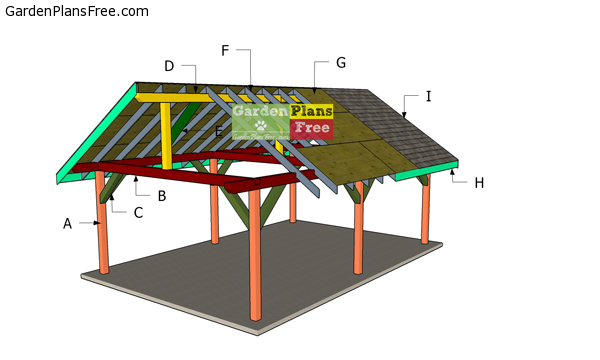
Building-a-16×24-pavilion-gable-roof
Materials
- A – Posts – 6×6 lumber 8′ long 6 pieces
- B – Support Beams – 6×8 lumber 14′ long 4 pieces
- B – Support Beams – 6×8 lumber 16′ long 3 pieces
- C – Braces – 6×6 lumber 42 3/8″ long 12 pieces
- D – Ridge Beam – 6×6 lumber 53 1/4″ long 3 pieces
- D – Ridge Beam – 6×8 lumber 14′ long 2 pieces
- E – Braces – 6×6 lumber 48″ long 4 pieces
- F – Rafters – 2×6 lumber 12′ long 30 pieces
- G – Roof – 1/2″ plywood 4’x8′ 12 pieces
- G – Roof – 1/2″ plywood 4’x4′ 4 pieces
- G – Roof – 1/2″ plywood 44 3/8″x8′ 4 pieces
- G – Roof – 1/2″ plywood 44 3/8″x4′ 2 pieces
- I – Roofing – Tar paper & Asphalt shingles 600 sq ft
- J – Trims – 1×8 lumber 146 1/8′ long 4 pieces
- J – Trims – 1×8 lumber 12 ft long 2 pieces
- J – Trims – 1×8 lumber 16 ft long 2 pieces
- 6 pieces of 6×6 lumber 8 ft long
- 6 pieces of 6×6 lumber 10 ft long
- 1 piece of 6×6 lumber 12 ft long
- 6 pieces of 6×8 lumber 14 ft long
- 3 pieces of 6×8 lumber 16 ft long
- 30 pieces of 2×6 lumber 12 ft long
- 4 pieces of 1×8 lumber 14 ft long
- 2 pieces of 1×8 lumber 12 ft long
- 2 pieces of 1×8 lumber 16 ft long
- 21 pieces of 1/2″ plywood 4’x8′
- 600 sq ft of Tar Paper & Asphalt Shingles
- 6 pieces of 6×6 Post Anchors
- 6 pieces of 16″ diameter tube form
- several concrete bags
- 6 pieces Post to Beam Connector
- 800 pieces of 1 5/8″ screws
- 12 pieces of 8″ screws
- 12 pieces of 10″ screws
- 2″ nails
- 150 pieces of 5 1/2″ screws
- 60 rafter ties
- 2 boxes of 1 1/2″ structural screws
- 1 boxes of 2 1/2″ structural screws
- 100 ft of drip edge
- 8 post anchors
- wood glue, stain/paint
Tools
- Hammer, Tape measure, Carpentry square
- Miter saw, Drill machinery, Screwdriver, Sander, Router
- Safety Gloves, Safety Glasses, Respiratory Mask
Time
- One week
Step 1: Building the Base of the Pavilion
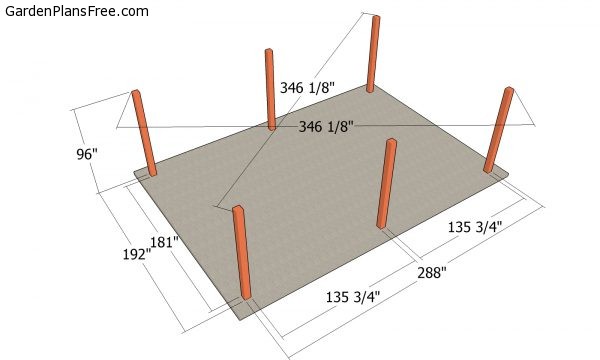
Laying out the pavilion
First, layout the posts for the 16×24 pavilion. Use batter boards and string to determine the location of the posts. Apply the 3-4-5 rule to every corner of the pavilion, so you make sure they are right angled. Make sure the diagonals are equal. Determining the location for the pavilion is essential, as you have to comply with the local building codes. Make sure the surface is level and remove the vegetation layer.
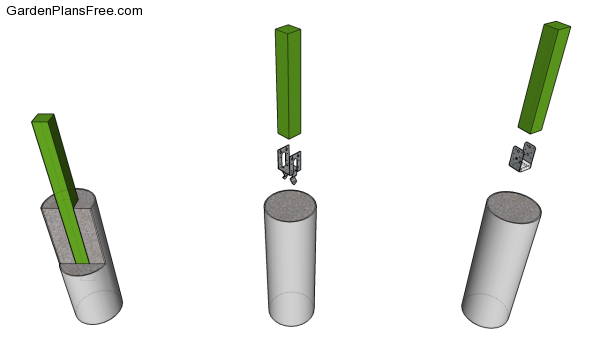
Dig 3 ft holes into the ground, making sure they have about 16″ in diameter. Fit the tubes then the posts into the ground and plumb them with a spirit level. Fill the holes with concrete and then set the anchors. Let the concrete dry out for several days. Read the local codes for more details on how to secure the posts.
Use lag screws to secure the posts to the anchors. Before pouring the concrete you need to make sure the top of the posts are horizontal one to another. Use a laser to mark the level to the top of the posts and use a circular saw, if you need to make cuts.

Top beams
Use 6×8 lumber for the top rails and for the ridge beams. Mark the cut lines on the beams and then make the cut outs with a circular saw and a chisel. Set the circular saw at 3 5/8″ and then make parallel cuts inside the marked areas. Clean the recess with a chisel and sandpaper.
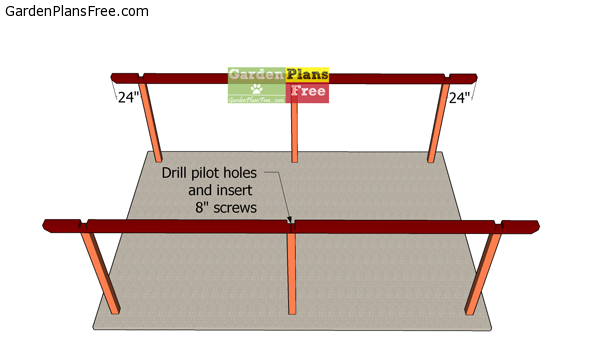
Fitting-the-side-top-plates
Fit the top rails to the sides of the pavilion. Notice the 16″ overhangs to the front and back of the pavilion. Drill pilot holes through the plates and insert 8″ screws to lock them to the posts. Use 2 screws for each joint. Make sure the corners are square and plumb the posts vertically.
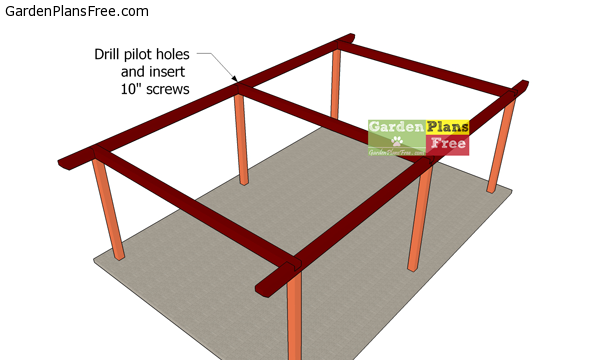
Fitting-the-cross-beams
Fit the cross plates to the pavilion. Align the edges flush and drill pilot holes. Insert the 10″ screws to lock the cross plates into place tightly. If you need plans for an even larger pavilion, take a look over these 20×30 pavilion plans.

Build the braces for the base of the pavilion from 6×6 lumber. Use a miter saw to make 45 degree cuts to both ends of the braces. Fit the braces to the posts, after you plumb them vertically. Drill pilot holes and insert 5 1/2″ screws to secure the braces into place tightly (2 for each joint).
Step 2: Building the Roof of the Pavilion
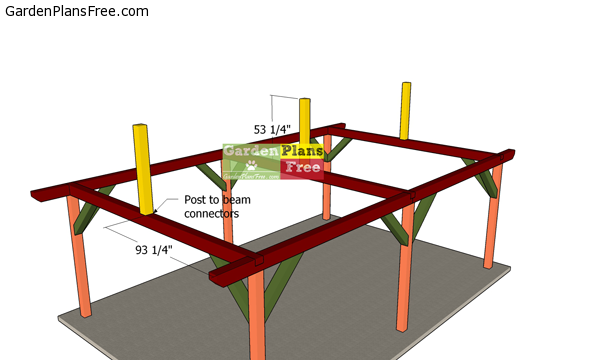
Fitting-the-supports-for-the-ridge-beam
Center the 6×6 supports to the top of pavilion. Plumb the supports with a spirit level. Use post to beam connectors to secure the supports to the frame of the pavilion.
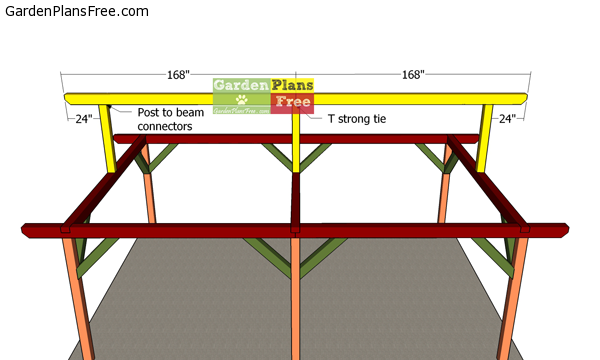
Fitting-the-ridge-beam
Fit the 6×8 ridge beam to the supports with post to beam connectors. Make sure the corners are square. Use 2 1/2″ structural screws to lock the connectors into place.
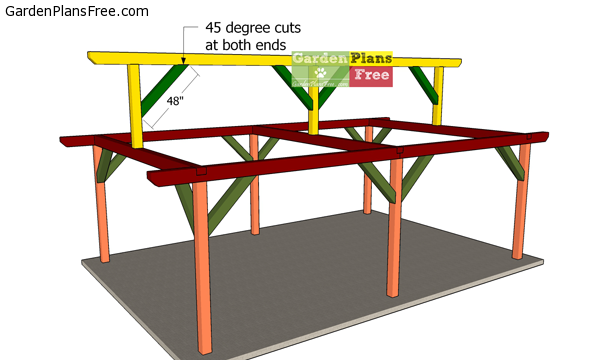
Braces-for-ridge-beam
Use 6×6 lumber for the braces. Make 45 degree cuts at both ends of the braces. Secure the braces into place with 5 1/2″ screws. Drill pilot holes before inserting the screws,
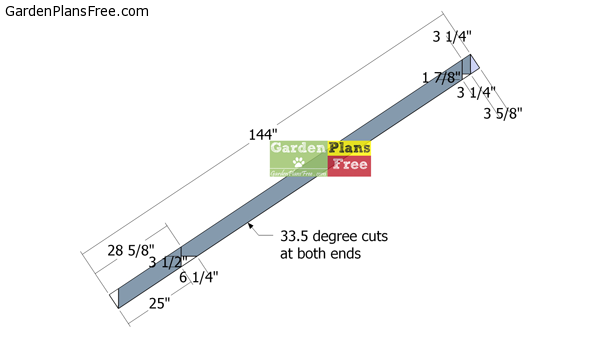
Rafters-for-gable-pavilion
Use 2×6 lumber for the rafters. Use a miter saw to make the cuts to the boards. Smooth the edges with sandpaper. Make the notches to the rafters, as shown in the plans. Mark the lines before doing the cuts.
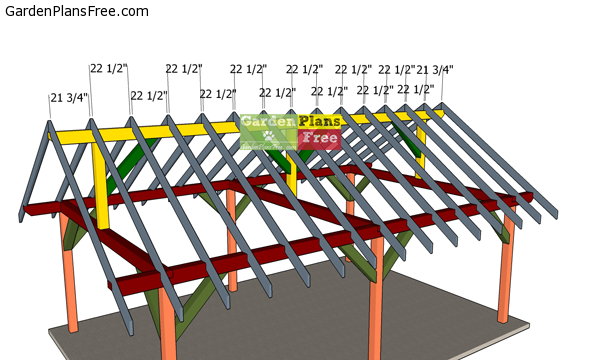
Fitting-the-rafters
Fit the rafters to the top of the pavilion, using the information from the diagram. It is important to space the rafters properly (every 16″ on center), otherwise you won’t be able to attach the roofing sheets. Use rafters ties to lock the rafters to the beams. Use 1 1/2″ structural screws for the rafter ties.
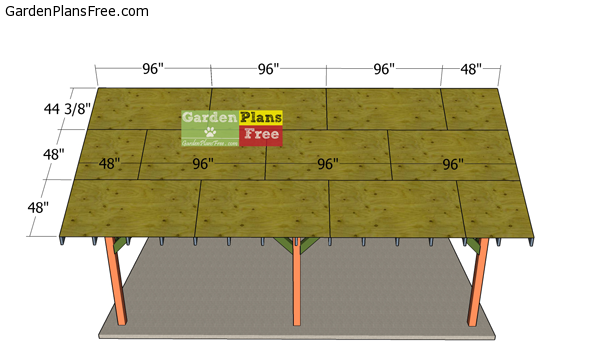
Roof-sheets—installation
Use 1/2″ plywood for the roof of the pavilion. Cut the sheets at the right dimensions and then lay them to the top of the pavilion. Leave no gaps between the sheets and then insert 1 5/8″ screws, every 8″ along the rafters, so you can secure them into place tightly.
Step 3: Pavilion Finishing Touches

Roof-trims—sides
Fit 1×8 trims to the sides of the pavilion. Align the edges with attention and insert 2″ nails to lock them into place tightly.
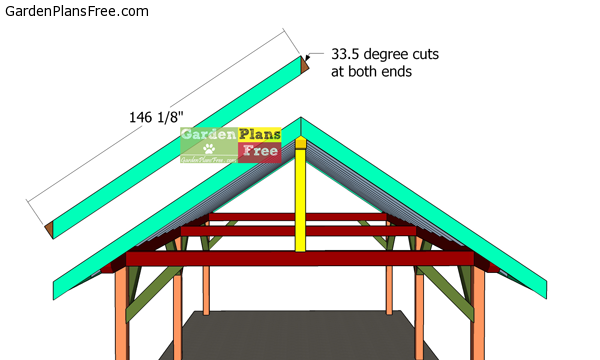
Gable-end—roof-trims
Fit the 1×8 trims to the front and back of the pavilion. Lock them into place with 2″ nails.
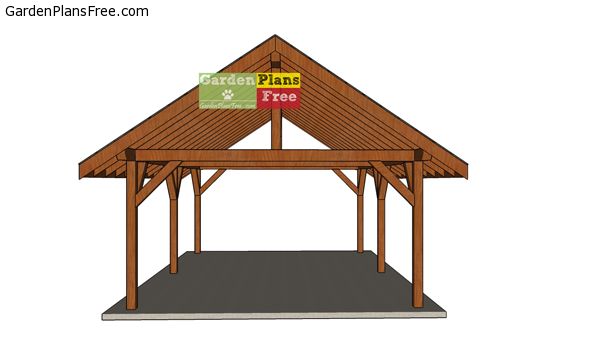
16×24-gable-pavilion-plans
Cover the roof with tar paper and then install the asphalt shingles. Make sure you also install the appropriate drip edges, so you can seal the shed roof. Read the manufacturer’s instructions for a tight fit.
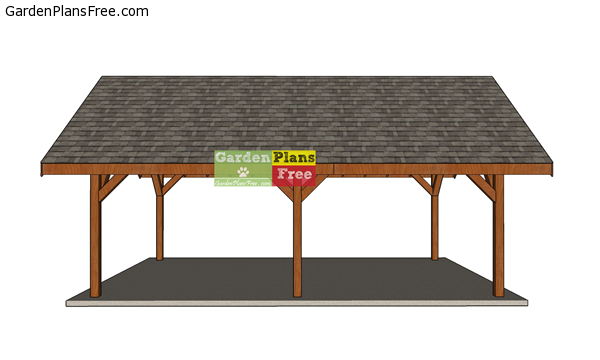
16×24-gable-pavilion-plans—side-view
Last but not least, you need to take care of the finishing touches. Therefore, fill the holes with wood putty and then smooth the surface with 120-220 grit sandpaper. Apply a few coats of paint / stain to enhance the look of the pavilion and to protect them from the elements.
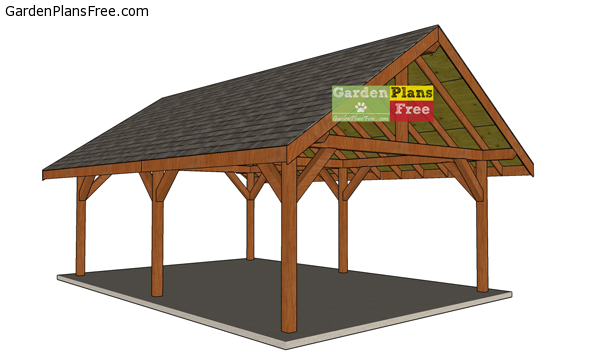
How-to-build-a-16×24-pavilion
This pavilion has a 8:12 pitch, so if you live in a rainy area this will be great. Moreover, the steep angle of the roof will help you create something with an outstanding design. This pavilion is built on a really sturdy frame, making it durable.
PRO TIP: Apply several coats of paint or stain over the components, in order to protect them from decay. Check out the rest of the project to learn more about building garden projects. I also have free plans for you to build a 14×14 lean to pavilion, so you should consider checking them out, as well.


9 comments
Any idea what the material costs are on this?
2500 usd
Hi, I’m looking to build this pavilion at 16×20 and am wondering if I could use 8×8’s instead of 6×6 and 6×8. My biggest area of concern is the ‘B’ support beam and whether or not an 8×8 can span that 16’ without any sagging.
Any advice would be awesome!
First of all, the plans are for a 16×24, not a 16×20 pavilion. Using 8×8 won’t hurt but it won’t make any difference, since 6×10 it’s an upgrade and not a 8×8. A 8×8 would only make the pavilion look more masculine.
How do I download these particular plans?
Can I get A copy of those plans?
How can i obtain a set of prints like this but for a 18 x 28 pavilion?
First, thank you for these amazing plans! Second, is there a way to alter the roof for a metal roof? I guess the question is, do we need less rafters for a metal roof? Thank you!
Why aren’t I able to find the plans for the 14’x 16′ Pavillion for purchase on your site?